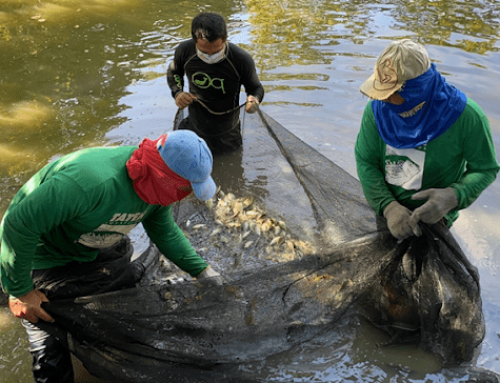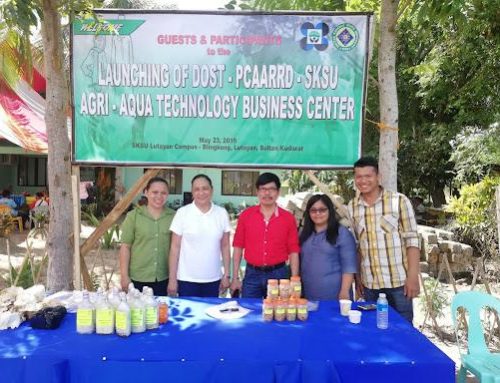In this Article

The Central Luzon State University through the leadership of Dr. Emmanuel M. Vera Cruz developed the aquashade for the tilapia hatchery production in 2016. Shading the breeding area especially during the hot season was shown to reduce water temperature by as much as 40oC and enhance fry production by seven fold. Two designs of aquashade consisting of collapsible metal frames and silver straw shades were developed.
Aquashade was pilot tested in commercial hatcheries under different seed production systems during different seasons to determine its technical and economic viability. Two trials were conducted in two selected hatchery cooperators and on-station, with two experimental ponds (Shaded and Unshaded). Trials were conducted during rainy, cold, and dry seasons following the standard hapa-based and pond-based seed production systems.
During the rainy and cold season trials, no significant differences on the average spawning rate and total seed production between treatments for both on-farm and on station trials were observed. Shading the breeding pond during the dry season, however, reduced mean water temperature by around 3C, and resulted to significantly higher average spawning rate (up to 75.54±9.54%) and total seed production (up to 5,400±927 fry) in shaded treatment compared to unshaded treatment in hapa-based system. In pond based system, there was a significantly higher average total seed production (up to 141,954±27,194 fry) in the shaded treatment compared to unshaded. There was a significant increase up to 262.84% in the average spawning rate and up to 256.43% in the average total seed production in shaded treatment compared to unshaded during the dry season. Partial budget analysis for the first year showed that there was positive net change in the profits by as much as 97.45% in using the aquashade in hapa-based system and by as much as 21.15% in pond-based system. For the second year, there was a positive net change in the profits by as much as 67.36% in hapa-based and by as much as 33.38% in pond-based. Therefore, the use of low-cost collapsible aquashade in breeding pond is technically and economically viable.








